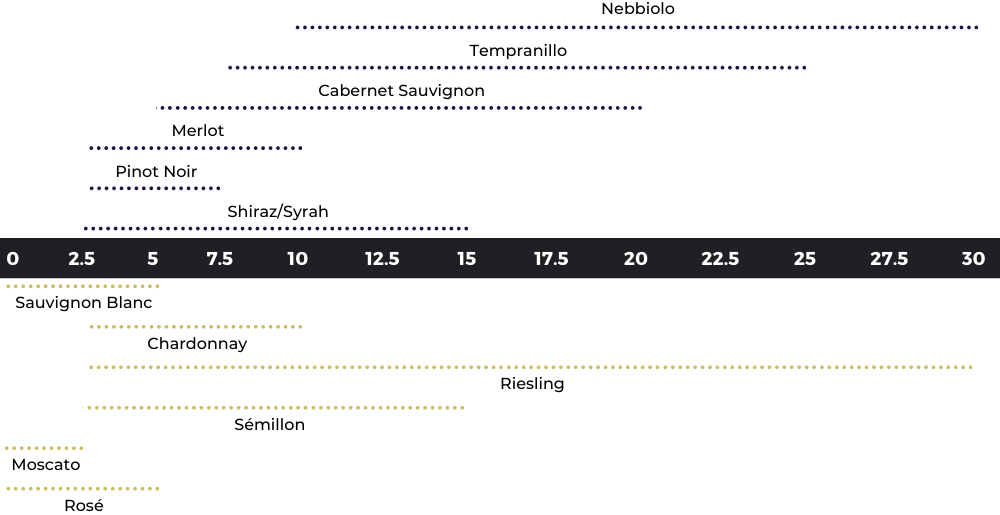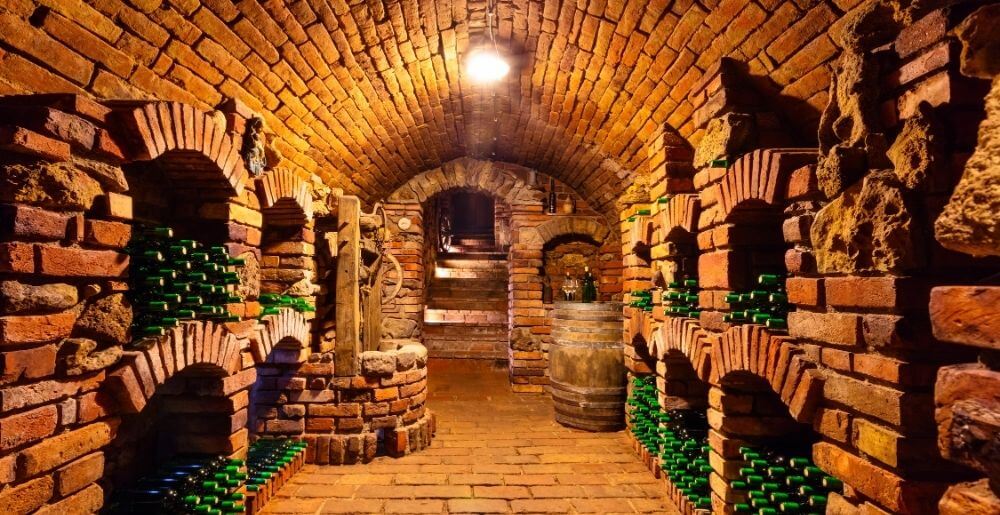One of the most frequently asked questions of sommeliers and winemakers everywhere is: how important is age when looking at a bottle of wine?
The short answer? It depends.
Whilst it’s true that ageing a bottle of wine, particularly red wine, can have a positive effect on its taste over time, people often incorrectly assume that the older the bottle is, the better it must be, with age having a disproportionate impact on the decision making process of many consumers.
Ask anyone in the industry, however, and they will be quick to tell you that every wine is different and it’s never safe to assume that a bottle of wine from 1945 will be better than one from 2001 or even one from 2020.
When deciding whether or not a particular bottle of wine will benefit from being aged further or if it should be drunk young and fresh, it’s important to consider a number of crucial factors, including the grape varietal of the wine in question, its vintage (growing year), and the region it comes from.
Depending upon these factors, a bottle of wine can be comfortably aged for decades and decades, improving as it goes along, or be already at its peak and best had as soon as possible.
In this article, we explain, with the help of graphics, what to look out for when you’re weighing up whether or not to keep a particular bottle of wine on your wine rack or open it up right then and there.
Let's start with how important the grape varietal is when deciding the age-worthiness of a bottle of wine.
The Importance of Grape Varietal When Ageing Wine

Whilst most of us will know that wines can be made from hundreds of different grape varietals, you might be a little surprised to learn that not only do red wines usually possess a longer ageing period than whites, some individual grape varietals are better suited to ageing than others, with those that produce wines with naturally higher levels of tannin or acidity being typically more age-worthy.
This is down to the fact that the more of both of these traits that there are in a wine, the higher the likelihood is that it will improve over time with ageing, with both of them softening out as the wine is allowed to age.
If you were to drink a highly tannic red wine or incredibly acidic white wine when it’s fresh or young then it’s highly likely that it would taste too bitter, drying, astringent, or sour, with it being far better to let both of these two traits mellow out over time to make it more enjoyable.
On the flip side of this, if a wine that is already suitable to drink now is left to age, it will start to rapidly deteriorate, with it not only losing flavour but also beginning to taste increasingly more off.
For a general guide on how long you should be ageing many common examples of red and white wines based on the varietal in question, see our quick graphic below.

As you can see from this timeline, some wine grapes, such as Chardonnay or Cabernet Sauvignon can typically be aged for longer than others, including Pinot Noir or Sauvignon Blanc.
There are plenty of exceptions to this rule, however, and it’s best not to make a decision to age or not based solely upon the grape varietal of the wine you’re considering.
The Importance of Vintage & Region When Ageing Wine

Having learnt how important the grape varietal is when looking at the age-worthiness of a wine, it’s now time to move on to the importance of two other contributing factors: a wines vintage and region.
Put simply, a wine's vintage is the year in which the grapes were harvested, with this often having a dramatic effect on both the taste and age-worthiness of a particular wine in question.
The region, on the other hand, is where in the world the grapes were grown, with some grape varietals growing better in different parts of the world.
Depending upon both when and where the grapes were grown, their inherent growing conditions will be different, with some vintages and regions known for being colder or hotter and more damp or dry than others, affecting not only the extent to which the grapes ripen but also how much acidity and alcohol is present in the wine after fermentation.
Cooler climates regions or vintages are known for producing wines with lower levels of alcohol but greater amounts of acidity whilst the reverse is true of warmer climate regions or vintages, where the grapes ripen more thoroughly, producing wines of higher alcohol and lower acidity.
How does all of this work to influence the age-worthiness of a particular bottle?
Well, depending upon the exact growing conditions of a particular vintage or region, some wines will be excellent examples of that particular grape varietal, with Pinot Noir grapes, for example, preferring cooler climate growing conditions over warmer ones and therefore being more suited to ageing if they’re grown in a cooler vintage or part of the world.
Just as it is with the grape varietal, however, looking at the vintage or region alone is not a safe way of saying whether or not a wine will age well, with other contributing factors also needing to be considered.
Why do Dessert Wines Often Age Well?

Moving beyond regular bottles of red or white wines, however, you may note that some bottles of dessert wine, such as Sherry, Port, or Botrytis Wine, can be comfortably aged for decades, with some of the oldest examples of these wines still around today coming from the early 20th century.
So how is it possible that many dessert wines can age so successfully for so many years?
It mainly comes down to two traits: their higher levels of alcohol and their greater amount of residual sugar.
Just as how the greater presence of tannins and acidity in bottles of red or white wine work to make these types of wine more age-worthy, the higher levels of alcohol and sugar contained in most bottles of dessert wine makes them far more chemically stable and therefore better suited to ageing.
Be sure to consider the more premium bottles of Sauternes, Port, or Sherry safe bets when you’re looking to add particularly age-worthy bottles of wine to your cellaring selection.
The Importance of Storing Conditions When Ageing Wine

Everyone has seen the quintessential wine cellar before, with its dusty rows of bottles stacked on top one another in what looks more reminiscent of a bat cave than an effective storage facility.
The reason that wine cellars have traditionally looked like this is that they have historically been built in underground caves or basements where they are far less likely to be exposed to instances of extreme heat, humidity, or sunlight.
In today's world, however, and with the invention of refrigerators, air conditioning units, and lighting control methods, wine cellars no longer have to be placed underground, with it actually being far better to build them to be highly controlled modern environments rather than leaving them in underground cellars that still undergo some degree of temperature and humidity fluctuation.
But how important is it that wines not be exposed to excessive amounts of heat, humidity, or sunlight when being stored and do all wines need to be stored this way?
Well, the answer to this is simple: environmental factors such as intense sunlight or high heat or humidity increases the likelihood of a wine going bad as these can cause wild swings in a wines chemical structure, making it age too rapidly and begin breaking down and oxidizing.
You’ll be relieved to hear, however, that the majority of wines that you buy should be drunk relatively young (most put the number at around 90% to be drunk within the first year and 99% within the first 5 years), making it unnecessary to think about keeping wines for longer than a year or so.
This means that for the majority of our wine purchases, it is often enough that we leave them away from direct sunlight and away from extreme heat, with only some of the finest and most expensive bottles of wine requiring very strict climate controlled cellaring conditions in order for them to last the decades until they’re at their peak drinking period.